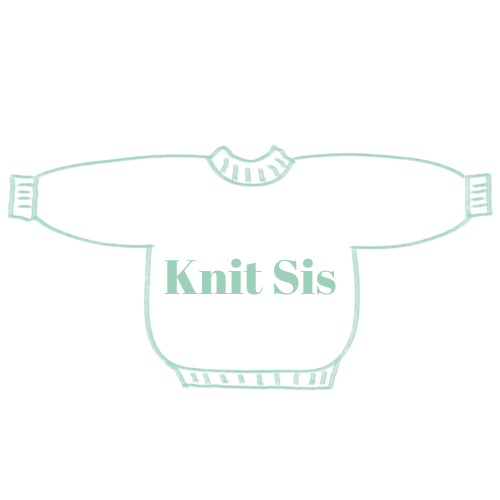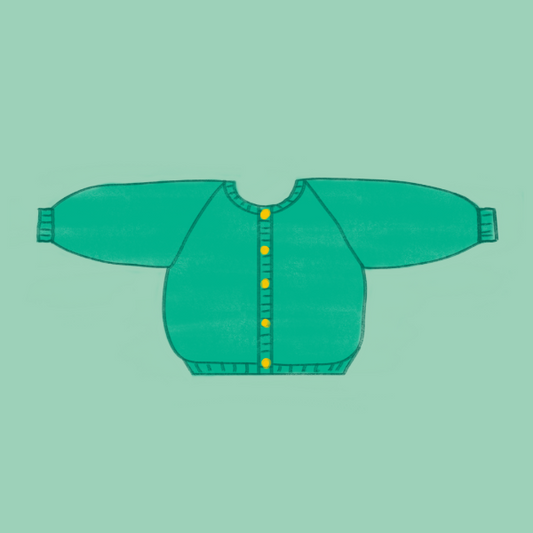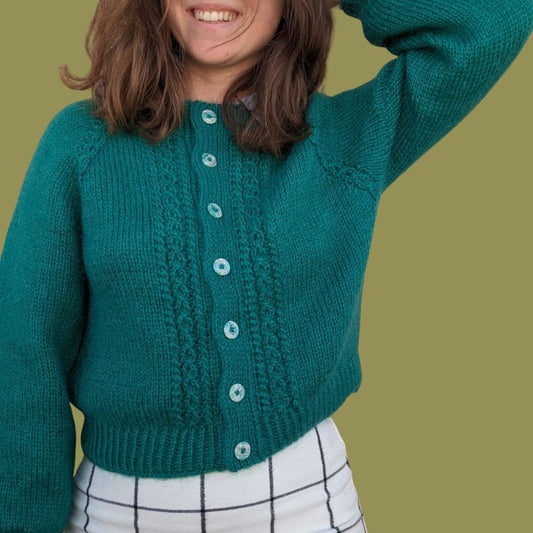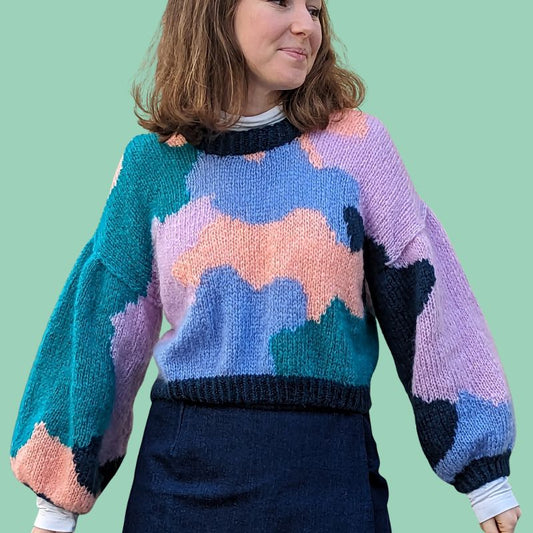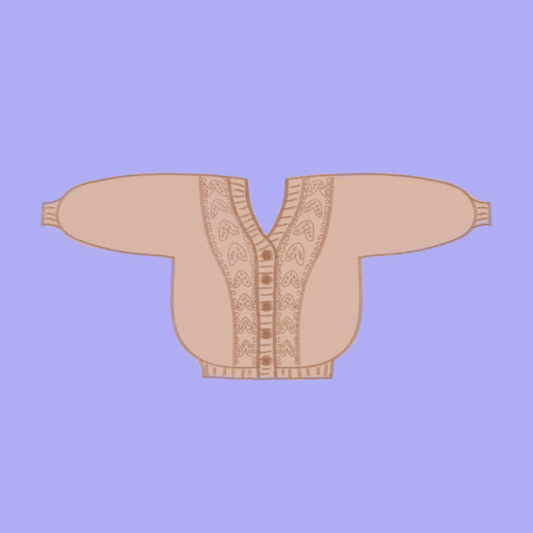🧶 Knitting for beginners: how to understand and use a knitting pattern without stress
Knit SisShare
You've downloaded your first pattern… and now, panic sets in 😅
Between the abbreviations, sizes, diagrams and the mysterious “rg end” or “env sur env”, it almost seems like a secret language of experienced knitters!
Don't worry 🫶 we've been there too. At Knit-sis , we learned to read our first patterns thanks to our grandmother and aunt, over cups of tea and a few laughs. Today, we're sharing everything we wish we'd known when we started out, so you can read and understand a knitting pattern without stress , and above all , enjoy knitting from the very first stitch .
👉 Want to get started right now?
Discover our free "Doudou" pattern , perfect for your first soft and easy project 💕
👉 See the Doudou pattern
🧭 What exactly is a knitting pattern?
A knitting pattern is a bit like a cooking recipe : it guides you step by step to transform a few balls of yarn into a finished garment.
It contains all the essential information: the materials, the needles, the yarn, the size to knit, the stitches used, and of course the row-by-row instructions.
When you're starting out, you often tend to jump straight into knitting without reading everything (guilty as charged 🙋). The result: you sometimes end up with a sleeve that's way too big or a collar that's too tight. That's what happened to Lenny the first time she skipped the "swatch" step — a mistake that has become legendary in the Knit-sis family 😅
🪡 Remember: a pattern is your knitting GPS map. If you follow it, you'll reach your destination (and without unnecessary detours!).
The main parts of a pattern explained
A pattern is generally broken down into 5 main sections:
1️⃣ Materials – the threads, needles, and accessories used
2️⃣ Sizes – to choose the right size according to your measurements
3️⃣ Gauge swatch – essential to ensure your knitting is the correct final size
4️⃣ Abbreviations and stitches used – the “codes” of knitting
5️⃣ Detailed instructions – row by row, sometimes with a diagram or schematic
💡 Example: on our pattern Cardichou (The Cabbage Vest) is clearly structured so that even a beginner can follow along without stress. Each step is explained and tested by real knitters — not robots 🧵
✍️ How to read knitting abbreviations?
The abbreviations are there to shorten the instructions , a bit like “knitting texts”.
At first they may seem opaque, but they quickly become natural with practice.
Here is a small table of the most common ones:
|
Abbreviation |
Meaning |
|
m |
mesh |
|
approx |
towards |
|
end |
place |
|
rg |
rank |
|
augm |
increase |
|
sun |
decrease |
|
... x 4 |
Repeat the sequence 4 times |
That's exactly what we were doing at the beginning with our model Câlin is a simple and quick sleeveless sweater, perfect for learning without getting lost in the jargon.
📌 Remember: abbreviations make your life easier, not harder. Once you decode them, they'll save you tons of time ⏱️
Diagram symbols: our mnemonic trick
The diagrams may seem daunting at first, but they are actually visual and logical :
Each symbol represents a stitch or a gesture.
Louise has a very simple trick to remember them:
“I imagine them like a musical score: each point has its note, and each row its melody 🎶.”
💬 If you knit a patterned design (like our Marguerite ), diagrams quickly become your best ally.
🌼 Remember: understanding a diagram is like learning a language: a little effort at the beginning, then the magic happens!
🪡 How to use a knitting pattern without making a mistake
👉 Here's the simple 6-step method (perfect for the featured snippet 👇):
1️⃣ Read the entire pattern before starting.
This helps you understand the overall logic.
2️⃣ Check your sample.
If your knitting is tighter, your garment will be smaller!
3️⃣ Choose your size.
Compare your measurements to the table provided.
4️⃣ Prepare your equipment.
Needles, markers, rings: everything must be ready.
5️⃣ Note your landmarks.
Cross the lines as you go, or highlight your height.
6️⃣ Read again before assembling.
A quick final check avoids many surprises 👀
Do you want a concrete project to test this method?
We highly recommend our vest Festi : a round, modern and super accessible pattern, perfect for learning to follow a pattern from start to finish 💫
Pro tip: when to modify (or not) a pattern
Modifying a pattern is possible — but not just any old way!
If you are a beginner, just adjust the length or color, without touching the increases or decreases.
Based on the model Marguerite , for example, you can lengthen the body without any problem.
But changing the lace… that's a whole other story! 😅
💡 Key takeaway: start by adapting the form , not the structure . And always write down your changes.
🌷 Our tips for getting started with Knit-sis patterns
At Knit-sis , we design our patterns with a simple idea:
👉 that a boss should be a companion, not a headache.
Our beginner models (like Doudou , Oui Oui and Câlin ) are designed to teach you without scaring you.
Each stitch is explained, tested, and validated by a real community of supportive knitters 💌
🧵 “When we started out, patterns seemed reserved for experts. Today, we want to prove that everyone can do it — and have fun doing it.”
Discover our special beginner collection to find your perfect first project 💕
🔗 Recommended resource:
Wool and the Gang – How to read knitting patterns , a great supplement for visualizing how to read patterns (in English).
💬 In summary
▪️ A pattern is like the recipe for your knitting
▪️ Read it in its entirety before you begin
▪️ Discover abbreviations as a new vocabulary
▪️ Advance rank by rank, without rushing
▪️ And most importantly: have fun! 🎉
💌 Ready to knit with confidence?
You now have all the tools you need to understand, follow and love your first knitting pattern.
And if you want to put theory into practice, we invite you to try our free model Doudou : a soft, simple sweater that's 100% pure pleasure ✨
Or explore our special collection for beginners
